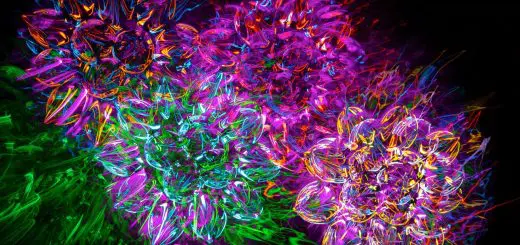Sustainable Fashion Trends To Follow In 2025

Looking for more amazing products? Check out our online store and explore our collection here! Happy shopping!
Before diving in, please note: This post is for informational purposes only. If you’d like to know more about how we approach topics, feel free to check out our friendly Disclaimer Page.
Hey there, amazing readers! 
We’re committed to delivering quality posts, and your support (even just sticking around despite the ads) means everything to us. So, bear with us, and thanks for helping us keep the good vibes rolling. Now, on to the fun stuff!
TRANSLATE BUTTON AT THE END OF THE ARTICLE
A Quick Overview
Sustainable fashion isn’t just a trend; it’s a movement that’s reshaping how we think about clothing, consuming, and caring for our planet.
As we step into 2025, the fashion landscape is evolving, embracing eco-friendliness in ways that are as stylish as they are responsible.
Imagine walking down the street, wearing clothes made from recycled materials or upcycled treasures that tell a story.
Picture a wardrobe filled with versatile pieces that respect both the earth and its people.
This article explores the sustainable fashion trends to keep an eye on in 2025, so grab your favorite drink and let’s dive in!
Embracing Circular Fashion: The New Normal in 2025
Circular fashion is where the magic happens in 2025.
Picture this: a fashion system that keeps clothes in use for as long as possible.
Instead of the traditional linear model—buy, wear, dispose—circular fashion promotes recycling and reuse.
Many brands are now designing for longevity.
They create pieces that can be easily repaired or recycled.
Imagine a world where every garment has a second life.
Companies are launching programs that allow customers to return their old clothes in exchange for discounts on new items.
This not only reduces waste but also fosters a sense of community.
You might find yourself swapping outfits with friends or participating in local exchanges, making fashion a fun, shared experience.
Brands like Stella McCartney and Patagonia are leading the charge.
They focus on producing timeless pieces rather than fleeting trends.
This trend encourages us to think critically about our purchases.
Are we buying something we’ll wear repeatedly, or is it just a passing fancy?
This mindfulness can transform our wardrobe choices.
As we embrace circular fashion, we also encourage transparency.
Consumers want to know where their clothes come from and how they’re made.
Companies are responding by providing detailed information about their supply chains, ensuring we make informed choices.
When you shop, you’ll feel empowered knowing that your choices make a difference.
Eco-Friendly Fabrics: Choosing Nature Over Synthetic
In 2025, eco-friendly fabrics are going to be front and center.
Gone are the days of polyester and nylon dominating the closets.
Nature offers us a plethora of sustainable materials that are not only beautiful but also kinder to the environment.
Think about organic cotton, linen, and hemp.
These fabrics require fewer resources and are biodegradable, reducing our environmental footprint.
Bamboo is another star of the eco-fabric world.
It grows rapidly and requires little water, making it a sustainable option for clothing.
Brands are also experimenting with innovative materials like Tencel, made from sustainably sourced wood pulp.
It feels luxurious against the skin while being environmentally responsible.
But it’s not just about the materials.
How clothes are dyed matters too!
More brands are opting for natural dyes derived from plants, which are less harmful to both us and the planet.
Imagine wearing a dress dyed with indigo from plants—how cool is that?
As consumers, we can be part of this fabric revolution.
When shopping, look for the certification labels that indicate eco-friendly practices.
This simple act helps steer the fashion industry toward greener alternatives.
The Rise of Upcycled Fashion: Creativity Meets Sustainability
Upcycled fashion is like giving old clothes a makeover—think of it as the ‘Cinderella’ of the garment world!
In 2025, this trend is set to soar.
Designers are taking discarded clothing and transforming it into fresh, fabulous pieces.
It’s all about creativity and imagination.
I once went to a fashion show where every outfit was made from thrift store finds.
The designs were stunning, proving that you don’t need to buy new to look fabulous.
Upcycled fashion encourages individuality.
It’s a way to express your style while contributing to sustainability.
Look for brands that specialize in upcycling.
They often hold workshops where you can learn how to repurpose your own clothes.
I attended one last summer, and it was a blast!
I turned an old pair of jeans into a trendy bag.
Not only did I save money, but I also felt a sense of accomplishment.
Social media is buzzing with upcycled fashion influencers.
These creatives share tips, tricks, and inspiration for giving old clothes new life.
Following them can spark your own fashion revolution at home!
Minimalism in Style: Less is More for Chic Outfits
Minimalism is more than just a design choice; it’s a lifestyle.
As we move into 2025, the idea of “less is more” is gaining traction.
Think about a capsule wardrobe—simple, versatile pieces that mix and match effortlessly.
This trend encourages us to choose quality over quantity.
Instead of overflowing closets, we focus on a few well-made garments that we truly love.
Imagine having a wardrobe filled with timeless pieces that never go out of style!
You’ll spend less time deciding what to wear and more time enjoying life.
Minimalism also promotes intentional buying.
Each purchase becomes a thoughtful decision.
This mindset reduces impulse buys and fosters a more sustainable lifestyle.
When you invest in fewer, high-quality items, you’re not just being fashionable; you’re being responsible.
Many brands are stepping up, offering minimalist lines that are chic and sustainable.
Look for labels that emphasize clean lines and timeless designs.
You might find that minimalism enhances your personal style while being kind to the planet.
Inclusive Fashion: Celebrating Diversity in Design
Fashion should reflect all of us.
In 2025, inclusive fashion is a trend that’s here to stay.
It celebrates diversity in body types, abilities, and backgrounds.
This movement is not just about size representation; it’s about creating clothing that accommodates everyone.
More brands are expanding their size ranges, ensuring that all individuals feel represented.
This shift is empowering.
It sends a message that fashion is for everyone, regardless of shape or size.
I’ve seen brands launch campaigns featuring models of all shapes, colors, and abilities—and it’s refreshing!
Inclusive fashion also focuses on adaptive clothing.
Brands are designing garments that are easier to wear for those with disabilities.
It’s heartwarming to see fashion embracing functionality while remaining stylish.
As consumers, we can champion this movement by supporting brands that prioritize inclusivity.
Our purchasing power can help reshape the industry, making it more accessible and representative of our diverse world.
Tech Meets Eco: Smart Wearables for Sustainable Living
Welcome to the future!
In 2025, technology and sustainability are becoming best friends.
Smart wearables are hitting the market, blending style with functionality.
These innovative pieces allow us to monitor our consumption and make eco-friendly choices effortlessly.
Imagine a smart jacket that tracks your carbon footprint or a pair of sneakers that reminds you to care for the environment!
This tech-savvy approach to fashion empowers us to think about our impact every day.
It’s like having a personal sustainability coach right in your wardrobe.
Wearable tech is helping to revolutionize how we shop too.
Some apps can analyze your wardrobe and suggest outfits, maximizing use while minimizing waste.
I’ve started using an app that helps me plan my outfits for the week, reducing my impulse to buy new clothes.
The best part?
Many of these smart wearables are designed with sustainability in mind.
Brands are increasingly using recycled materials to create their tech-infused clothing.
It’s a win-win situation for fashion lovers and the planet.
Rental Revolution: The Future of Fashion Wardrobes
Why buy when you can rent?
In 2025, rental fashion is transforming how we approach our wardrobes.
This trend encourages us to borrow garments for special occasions instead of investing in pieces we might only wear once.
Think about it: a stunning gown for a wedding, a designer bag for a gala—renting allows us to wear high-quality items without emptying our wallets.
Plus, it’s a sustainable choice, as it reduces waste and promotes reusability.
Brands like Rent the Runway and HURR Collective have made waves in the fashion rental scene.
They offer a variety of styles that cater to different tastes, making it easy to find that perfect piece.
Renting is not just for formal wear; everyday clothing is now available for rent too!
Have you ever had a last-minute event and panicked about what to wear?
Renting allows you to try new styles and trends without commitment.
It’s like having a rotating wardrobe at your fingertips.
Local Sourcing: Supporting Artisans and Communities
In 2025, local sourcing takes center stage in sustainable fashion.
Consumers are increasingly aware of the benefits of supporting local artisans and communities.
By choosing locally-made products, we reduce our carbon footprint and contribute to the local economy.
Many brands are now focusing on ethical sourcing, ensuring fair wages and safe working conditions for their workers.
This transparency builds trust and fosters a deeper connection between consumers and the creators of their clothing.
Imagine wearing a dress made by a local designer who sources materials from nearby farms.
You not only look good; you also feel good knowing your purchase supports a fellow community member.
It’s a beautiful way to connect with your roots while embracing unique styles.
Local markets and pop-up shops are gaining popularity too.
They provide a platform for artisans to showcase their creations, making fashion feel more personal and meaningful.
Shopping at these venues can lead to discovering hidden gems that tell a story.
Zero-Waste Patterns: Cutting Down on Fashion Waste
Zero-waste patterns are shaking up the fashion industry in 2025.
This trend focuses on creating garments with minimal waste, ensuring that every scrap of fabric is put to use.
It’s a bold approach that challenges traditional manufacturing methods.
Designers are adopting innovative techniques that utilize every inch of fabric.
This not only minimizes waste but also contributes to a more sustainable production process.
I recently read about a brand that creates clothing from leftover textile scraps.
The results are stunning!
As consumers, we can support this movement by seeking brands that prioritize zero-waste practices.
These companies often share their production methods, so we know our choices matter.
The beauty of zero-waste fashion is that it sparks creativity.
Designers are challenged to think outside the box, leading to unique and innovative garments.
When we embrace this trend, we can inspire a shift toward a more sustainable fashion industry.
Ethical Brands: Spotlight on Conscious Consumerism
Ethical fashion is on the rise in 2025, spotlighting brands that prioritize social responsibility.
These companies are committed to fair labor practices, environmental sustainability, and transparency in their supply chains.
More consumers are becoming conscious shoppers, asking questions about where their clothes come from and how they’re made.
It’s empowering to know that our purchasing decisions can support ethical practices in the industry.
Brands like Everlane and Reformation have paved the way for transparency in fashion.
They openly share their production processes, helping us make informed choices.
This level of honesty builds trust and encourages us to support businesses that align with our values.
Shopping ethically doesn’t mean sacrificing style.
Many ethical brands offer fashionable, high-quality items that stand the test of time.
Plus, we can feel good knowing we’re contributing to positive change with every purchase.
Vegan Leather Alternatives: Stylish and Cruelty-Free
In 2025, vegan leather is taking the fashion industry by storm.
It’s a stylish, cruelty-free alternative to traditional leather, and it’s becoming increasingly popular.
The best part?
It’s not just limited to faux leather; there are innovative materials being created from mushrooms, pineapples, and apples!
These alternatives are not only kinder to animals; they also have a lower environmental impact.
I recently added a beautiful vegan leather jacket to my wardrobe, and I can’t get enough of it!
It’s chic, and I love knowing it’s a sustainable choice.
Many brands are now prioritizing these alternatives, making it easier for us to choose cruelty-free options.
From bags to shoes, the options for stylish vegan leather are endless.
Plus, they’re often easier to care for than traditional leather—no need for special conditioning!
In 2025, we’ll see more collaborations between designers and sustainable material producers, creating stunning pieces that are both stylish and ethical.
It’s a trend I am excited to support.
Trendy Second-Hand Shopping: Thrifting with Flair
Thrifting is not just a necessity; it’s a trend that’s gaining momentum in 2025.
Second-hand shopping offers a chance to find unique pieces while promoting sustainability.
There’s something special about unearthing a vintage treasure that no one else has.
I’ve found some of my favorite outfits while thrifting.
It’s like a treasure hunt, and you never know what you might discover.
Plus, buying second-hand reduces waste and gives new life to items that might otherwise end up in landfills.
Online platforms like Depop and Poshmark have made it easier than ever to buy and sell second-hand fashion.
These marketplaces are teeming with stylish finds, making thrifting accessible to everyone.
You can find everything from high-end designer pieces to quirky vintage items.
As we embrace this trend, we’re also helping to redefine the fashion narrative.
Thrifting encourages us to think creatively about our style and to appreciate the stories behind each garment.
So, let’s get out there and start hunting for our next fashion find!
Conclusion
As we look ahead to 2025, sustainable fashion is not just a chapter but an entire book filled with innovation, creativity, and responsibility.
From circular fashion to upcycled designs, the trends emerging reflect a collective desire to care for our planet while still expressing our unique styles.
As I embrace these trends, I feel empowered.
By making conscious choices and supporting ethical brands, we can create a positive impact on the world around us.
Sustainable fashion is about more than just what we wear; it’s about the stories we tell and the values we uphold.
Let’s celebrate this journey together and strut into 2025 with style and purpose!

The Enlightenment Journey is a remarkable collection of writings authored by a distinguished group of experts in the fields of spirituality, new age, and esoteric knowledge.
This anthology features a diverse assembly of well-experienced authors who bring their profound insights and credible perspectives to the forefront.
Each contributor possesses a wealth of knowledge and wisdom, making them authorities in their respective domains.
Together, they offer readers a transformative journey into the realms of spiritual growth, self-discovery, and esoteric enlightenment.
The Enlightenment Journey is a testament to the collective expertise of these luminaries, providing readers with a rich tapestry of ideas and information to illuminate their spiritual path.
Our Diverse Expertise
While our primary focus is on spirituality and esotericism, we are equally passionate about exploring a wide range of other topics and niches 

To ensure we provide the most accurate and valuable insights, we collaborate with trusted experts in their respective domains 
Our blog originally focused on spirituality and metaphysics, but we’ve since expanded to cover a wide range of niches. Don’t worry—we continue to publish a lot of articles on spirituality! Frequently visit our blog to explore our diverse content and stay tuned for more insightful reads.
Hey there, amazing reader! 
Check out our store here and take a peek at some of our featured products below! Thanks for being awesome!










